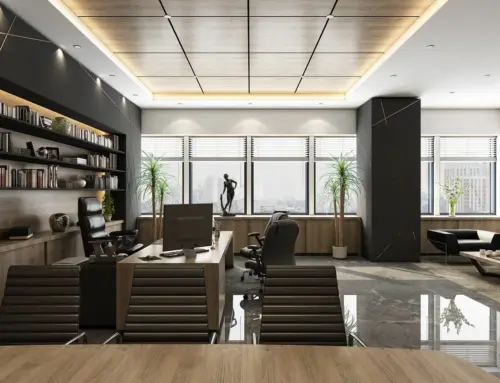The Role of Reinforcing Rendering in Engineering and Design Projects
What is Reinforcing Rendering? Well, rendering means covering the walls with an external layer. This layer could be made of acrylic, cement, silicone, monostich, lime, and many more. Reinforcing rendering means adding a layer of mesh to strengthen the render.
You may be wondering, but what is the purpose of that? If you want to know the answer to that question, keep reading as we will explain the benefits of reinforcing renders.
LEARN ABOUT THE BENEFITS OF REINFORCING RENDERING AND GAIN INSIGHTS INTO DIFFERENT TYPES OF RENDERING MESH SO YOU CAN MAKE THE RIGHT CHOICE.
Purpose of Reinforcing Rendering
1) Protection
The main purpose of reinforcing rendering is protection. It functions as an extra layer of protection so that the render is safe. The mesh provides strength to the building making it an integral part of the structure.
It also offers protection against environmental and weather elements such as storms or harsh winds.
2) Provide Better Grip
It sets a strong base for cement foundation. Support and sturdiness are two of the most important characteristics that you want in your walls. Reinforcing the renders will help to achieve that.
But for this purpose, the mesh needs to be set properly or else the foundation may collapse. So make sure that you choose a strong material. If you are stressing about making the right choice then you can always rely on a 3D Rendering Company.
3) Extend Life
Reinforcement plays a key role in extending the life of your building. Normal rendering is prone to damages such as cracks or breakage. But when you reinforce it, you are giving it a longer life. Reinforcement extends the longevity of your building. This is why it is widely used in residential, commercial and industrial buildings.
4) Increased Resistance
Reinforcing rendering increases the resistance of the walls. Meshes are resistant to various types of harmful factors such as acids, water, corrosion, fire, seismic, weather etc. It increases the strength of the building and provides it with safety. It wouldn’t be wrong to say that reinforcement mesh works as a buffer.
5) Waterproofing Properties
Rendering also has waterproof properties. Water and moisture can damage the render. But when you add an extra layer of mesh then you can prevent this damage. For example, if you are using steel to reinforce renders then it can be used in areas with high moisture. It protects the wall due to its waterproofing properties. Steel or metal offers high resistance to water.
Types of Reinforcing Renderings
There are two main types of reinforcement rendering. The types are categorized based on what type of material one chooses.
Fiberglass
The Fiberglass mesh is an innovative material used as a reinforcer. Fiberglass is a type of composite material made up of several tiny glass fibers. It is lightweight yet strong which makes it an ideal choice. Following are some of the characteristics and properties of fiberglass mesh:
- It is waterproof
- It strengths structure by imparting mechanical strength
- It doesn’t decompose or rust
- It has chemical resistance
- It doesn’t emit toxic substances so it’s safe to use
- It is not affected by changes in temperature and humidity
- It is easier to handle and use
- It may be expensive
Metal Lath
The Metal lath is another material used for reinforcing rendering. It is divided into the following types:
- Flat Diamond Metal Lath
- Corner Metal Lath
- Rib Metal Lath
- Split Metal Lath
- Self Furred Metal Lath
characteristics and properties of metal lath are:
- It’s a thin and flat sheet that is cut into pieces
- It helps to prevent rust and corrosion
- It is used for both interior and exterior walls
- It prevents cracking and peeling off
- It is widely used for ceiling and floor
- It is a relatively cheaper option than fiberglass
Choosing the Right Rendering Type with 3D Rendering Services
If you are confused about which type of reinforcer is the best for you then, you can always use 3D Rendering Services. 3D renders create an exact digital replica of your building or idea. A 3D model increases clarification and facilitates the decision-making process.
Graphic designers use various types of software to create realistic models. For examples:
- 3Ds Max
- V Ray
- Corona
- Sketchup
- Lumion
- Unreal Engine
- AutoCAD
- Revit
You can also see how your model interacts with the environment. A 3D model will help you to view every angle and corner of your building.
Factors to Consider While Choosing Rendering
Following are some of the factors you should consider for reinforcing rendering
How old is your property?
The age of the property will affect the rendering. One has to account for any repair or maintenance work and accessibility.
What do you want?
It is important to know about your own goals and requirements. You should have clarity on what you want to achieve.
What is your budget?
Different meshes have different prices. It is crucial to have your budget and range in mind. It will help you to save costs and prevent extra expenses.
THINKING ABOUT REINFORCING RENDERING? USE 3D RENDERING SERVICES!
To Conclude
Reinforcing rendering has numerous advantages for designing and engineering projects. It not only serves a functional purpose but an aesthetic one as well. It maintains the “new” condition of the house by preventing any cracks, water leakage or mould growth. If you are choosing to reinforce the render of your house, then you can avail the services of a graphic designer to see which is best for you.





